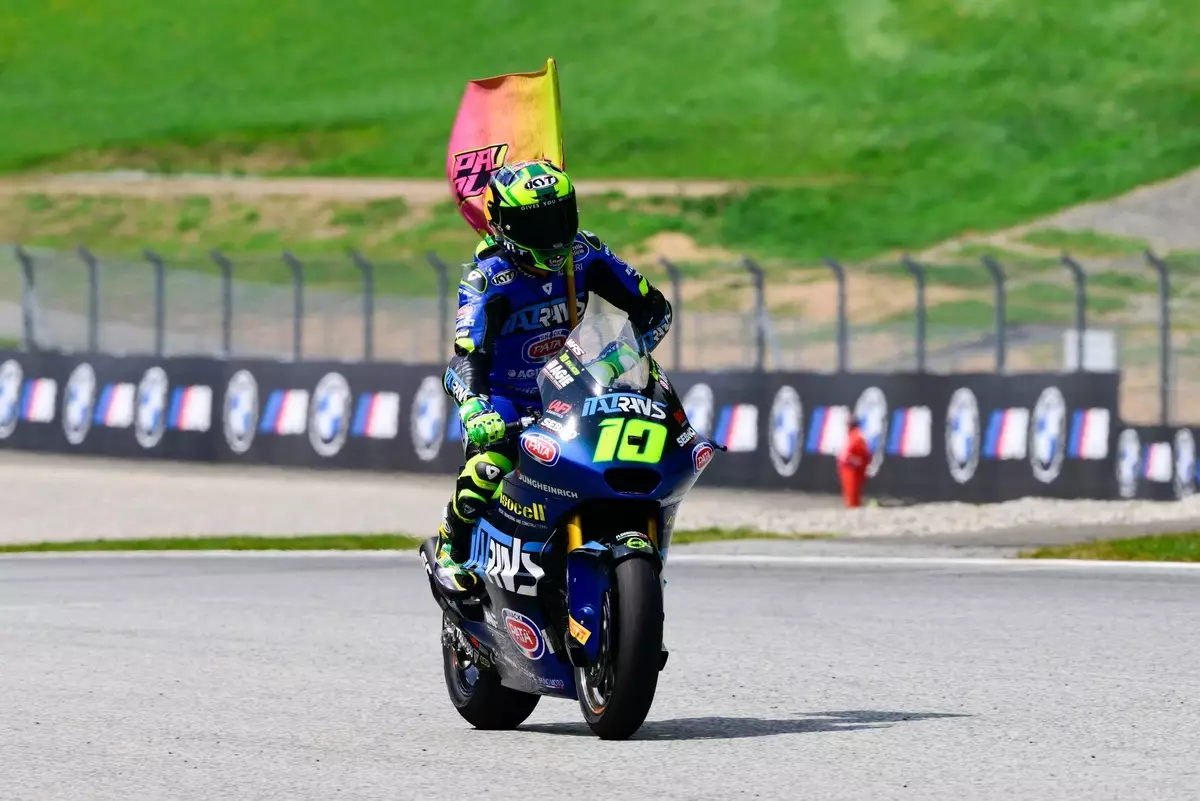The upcoming MotoGP season promises to be a pivotal chapter in motorcycle racing history, with the imminent debut of Diogo Moreira on the horizon. At just 21 years old, Moreira has captured the attention of fans and industry insiders alike, not only because of his exceptional performances in Moto2 but also due to the significant implications his promotion holds for the sport. Transitioning onto a Honda factory machine with the LCR team, he steps into the highest echelon of motorcycle racing with a mixture of grit and promise. This move isn’t merely a career milestone for Moreira; it’s a statement about the sport’s evolving talent landscape and a strategic move for Honda aiming to reclaim its dominance.
Unlike many riders who are propelled by reputation or nationality, Moreira emphasizes performance as his primary credential. His comments on Sunday underscore his desire to be judged by results, not flags. His recent victory in Austria, where he dominated the Moto2 field, signals that he is ready to embrace the highest level of competition. His emphasis on merit over nationality shocks some observers, given the historical tendency for the sport to sometimes lean on symbolic regional representation. Yet, Moreira’s humility and focus suggest he intends to carve his path based on raw talent and determination, rather than national pride or marketing gimmicks.
The Strategic Significance for Honda and the Broader Motorcycle World
Honda’s decision to promote Moreira reflects a calculated move rooted in both sporting strategy and market positioning. The Japanese manufacturer’s commitment to a three-year plan leading into the 2027 technical overhaul — with its 850cc prototypes replacing the current 1000cc engines — indicates a desire to nurture talent capable of competing under future regulations. Moreira’s youth and adaptability make him an ideal candidate to develop in this transition phase, giving Honda a long-term asset rather than just a short-term fix.
Furthermore, the timing aligns perfectly with Honda’s broader goal of reconnecting with the South American market. Coming off a decade-long absence of South American riders in MotoGP, Moreira’s arrival marks a symbolic and commercial redemption. With Brazil slated to host a Grand Prix again in 2026, Honda’s move can be viewed as an effort to grow regional enthusiasm and tap into Brazil’s passionate motorcycle fanbase. Such strategic positioning isn’t solely about immediate wins but about cultivating a new audience and reinvigorating Honda’s global appeal.
This development also casts a shadow of strategic reorganization within the paddock. As Moreira steps up, the situation with other riders, such as Jack Miller and Miguel Oliveira, evolves significantly. Miller’s potential extension with Yamaha underscores the importance of stability for manufacturers seeking consistency in their lineups. Meanwhile, Oliveira’s position remains precarious, especially given his recent injury setbacks and the cancellation of performance clauses that could jeopardize his future. The shifting landscape illustrates that MotoGP is not only a test of riding skill but also a web of contractual and strategic decisions aligned with wider manufacturer goals.
The Cultural and Commercial Repercussions in MotoGP
Moreira’s move marks a historic moment in MotoGP, reviving Brazilian representation in the sport after nearly two decades. The absence of South American riders, apart from the brief stint by Yonny Hernandez, has left a void that Honda’s decision aims to fill. Such a shift could spark renewed interest in the sport across Latin America, crucial for expanding the global reach amid fierce international competition.
However, this push for regional diversity is layered with commercial considerations. The end of Idemitsu’s sponsorship with LCR signifies a reshuffling of title sponsorship models, hinting at a more globally focused or perhaps different regional approach in team branding strategies. These commercial shifts underline that MotoGP isn’t solely about racing excellence—it’s a complex ecosystem driven by sponsorship, market expansion, and strategic alliances.
The announcement of Moreira’s rise also raises questions about the future landscape of the sport. With promising talent entering the top tier and manufacturers aligning their long-term visions, MotoGP is poised to become even more competitive and diverse. The sport’s evolution hinges on young riders like Moreira, whose success can inspire new generations and reshape the narrative of motorcycle racing’s global cultural fabric. This is a moment where sporting excellence intersects with commercial innovation, creating a compelling future that could redefine the character and reach of MotoGP for years to come.

